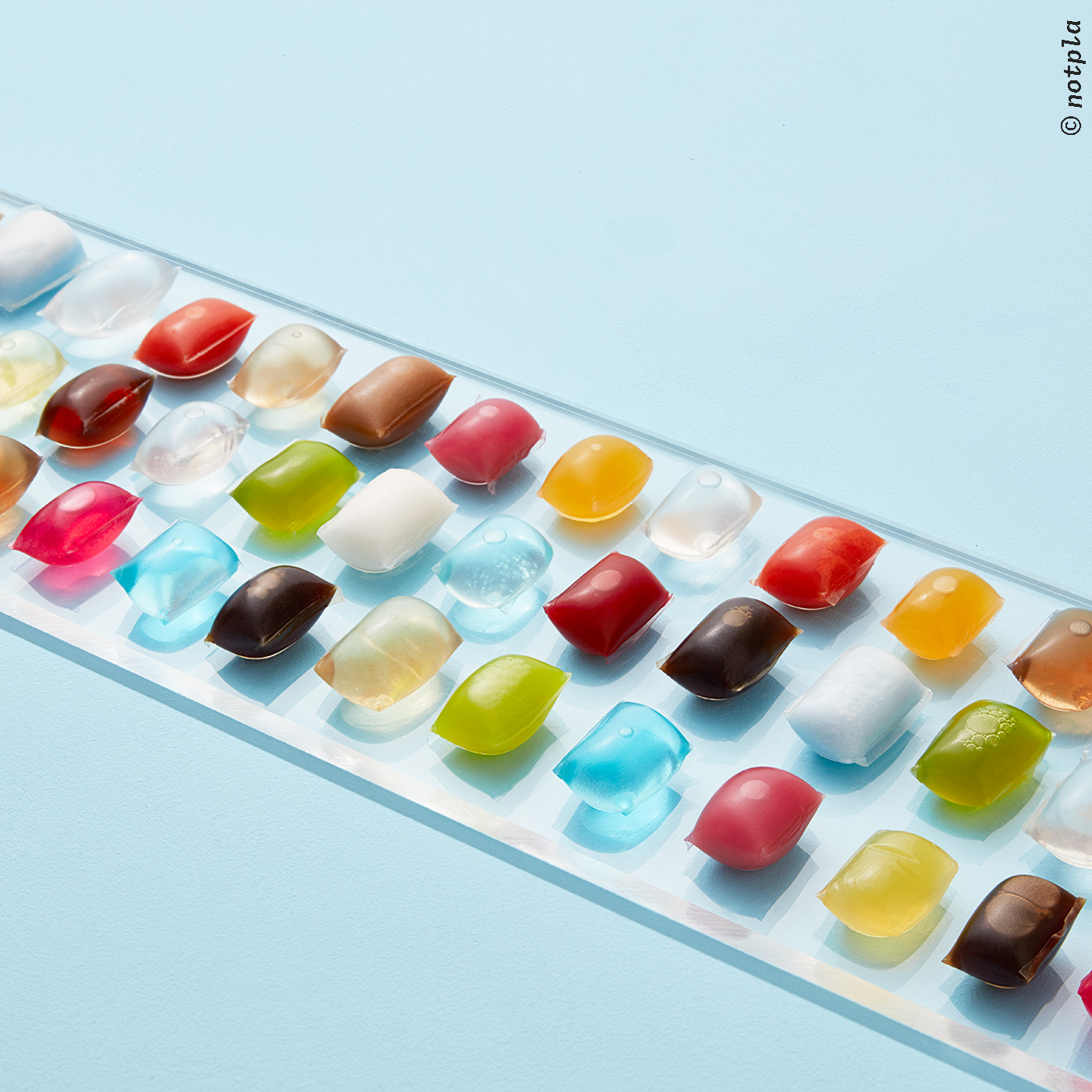In 2025, traceability is no longer a value-added feature—it’s a critical requirement for the global food industry. With increased consumer demand for transparency, more stringent ESG (Environmental, Social and Governance) reporting obligations, and a rising number of food recalls, the pressure is on for food businesses to implement robust, future-ready traceability systems.
Regulatory bodies around the world are tightening requirements to protect public health, reduce the risks of food fraud, and ensure accountability across increasingly complex supply chains. At the same time, global brands and retailers are demanding more data—and faster.
This article serves as a practical guide for food manufacturers, processors, distributors, retailers, and compliance professionals. Whether you're building a new traceability system or upgrading an existing one, we’ll walk you through the key concepts, tools, and best practices that define traceability success in 2025.
What is traceability in the food industry?
Traceability in the food sector refers to the ability to track any food item, ingredient, or packaging material throughout every stage of production, processing, and distribution. It plays a fundamental role in food safety, quality control, and regulatory compliance.
Effective traceability throughout the supply chain enables companies to quickly identify and remove unsafe products, protect consumers, prevent fraud, and minimise the scale and cost of product recalls. It also provides evidence to back up ethical sourcing and sustainability claims—issues that are increasingly influencing consumer choices and business procurement policies.
Since 2023, the role of traceability has evolved rapidly. Businesses are expected to move beyond basic batch tracking towards implementing digitised systems that can integrate with real-time supply chain data, helping to ensure food integrity and resilience in a volatile market.
Understanding forward and backward traceability
A comprehensive food traceability system must track movement in two directions:
- Forward traceability follows a product from the point of origin—such as a farm, fishery, or ingredient supplier—through manufacturing, processing, packing, and distribution to the end consumer.
Example: A meat processor should be able to trace every cut of beef from farm to supermarket shelf.
- Backward traceability allows businesses to trace a product from the end consumer or point of sale back to its original source.
Example: If a customer reports a safety concern about a pre-packaged meal, the retailer can use batch and supplier data to trace that issue all the way back to the raw ingredients.
Together, forward and backward traceability provide the foundation for rapid, accurate responses to safety issues and non-conformances. They also support key functions such as allergen management, origin verification, and compliance with local and international regulations, policy and standards.
How do traceability systems work in food manufacturing
-
Traceability systems in food manufacturing track the journey of ingredients and products through every stage of the supply chain—from sourcing and production to distribution and sale. By capturing key data points at each step, these systems enable manufacturers to identify the origin of raw materials, monitor processing conditions, and trace products in real time. This transparency supports food safety, simplifies recall processes, and ensures compliance with industry regulations while building trust with retailers and consumers alike. Modern systems include:
- Lot tracking and serialisation: Each item or batch is assigned a unique identifier that allows it to be traced across the supply chain.
- Digital traceability platforms: Cloud-based systems log data automatically and make it accessible to teams in real time.
- Integration with ERP and QA systems: Data from warehousing, production, and quality assurance is linked to provide a single source of truth.
Each stage—ingredient intake, processing, batching, packing, storage, dispatch, and delivery—is tracked. In the event of a recall or audit, this enables manufacturers to pinpoint where a product has been and what ingredients or processes were involved.
Benefits of a robust food traceability system
A strong traceability system delivers measurable benefits:
- Prevention of food fraud: Verify ingredient origin and prevent mislabelling or adulteration.
- Rapid outbreak response: Trace affected batches in the event of foodborne illness.
- Efficient recalls: Isolate and withdraw specific batches quickly, avoiding unnecessary product losses.
- Enhanced ESG reporting: Demonstrate ethical sourcing and sustainable production.
- Consistent product quality: Monitor variations and identify trends before they impact consumers.
- Stronger supplier oversight: Hold partners accountable with verified, real-time data.
Regulatory landscape and the 2025 compliance outlook
Regulatory requirements for traceability vary globally, but the trend is towards digitisation and harmonisation. Key frameworks in 2025 include:
- FSMA 204 (USA): Enforces Key Data Elements (KDEs) and Critical Tracking Events (CTEs) for high-risk foods, with full enforcement due by July 2028.
- BRCGS Global Standards: Promote robust traceability, mass balance, and digital systems as part of food safety certification.
- UK Food Standards Agency (FSA): Requires businesses to maintain traceability one step forward and one step back in the supply chain.
- EU Regulation (EC) No 178/2002: Mandates traceability across all stages of production and distribution.
- EUDR (EU Deforestation Regulation): Requires companies to provide evidence of deforestation-free sourcing, placing traceability at the heart of compliance for commodities like cocoa, coffee, soy, and palm oil.
- Australian initiatives: The National Agricultural Traceability Strategy and Traceability Alliance are pushing digital standards in meat, seafood, and produce sectors.
The regulatory direction is clear: food businesses must adopt scalable, interoperable, and real-time traceability solutions or risk falling behind.
Core components of an effective food traceability procedure
An effective traceability system should include a clear record of every step from intake to dispatch:
- Receival records: Document batch numbers, suppliers, expiry dates, order numbers, and volumes.
- Raw materials tracking: Record how and when ingredients are allocated to production.
- Product formulation logs: Link recipes and batch codes for finished goods.
- In-process records: Log equipment used, temperatures, times, and operator details.
- Packing records: Capture packing date, packaging materials, and destination.
- Dispatch logs: Detail transport, delivery times, order numbers and customer destinations.
- Waste records: Track by-products, losses, or discarded materials.
- Returns records: Monitor any returned stock and identify the source batch.
Implementing this framework ensures full traceability from farm to fork and supports rapid investigation when issues arise.
What is mass balance in traceability and why it matters
Mass balance refers to accounting for the total weight or volume of materials received and used in production. It ensures inputs, outputs, waste, and remaining stock add up.
A simple example: if you receive 1,000kg of oats, your traceability system should show:
- How much was used in finished products
- How much is in storage
- How much was wasted or reworked
Mass balance exercises are a core requirement of standards such as BRCGS and Red Tractor. They ensure traceability records are accurate, complete, and verifiable—especially during audits or product withdrawals.
Frequency of traceability procedures and audits
The frequency of traceability checks depends on your business and the standards you’re working to:
- Monthly: Required by some schemes like Red Tractor Meat Processing and BQAP.
- Quarterly: Suitable for medium-risk food categories.
- Annually: Minimum for most internal audits.
However, it is important to note that food business operators are expected to regularly stress test the integrity of their traceability systems, with customers often requesting mock traceability and recall exercises ad hoc. These exercises should include mass balance, trace-back and trace-forward tests, and mock recalls. A risk-based approach helps tailor the frequency based on product category, volume, and market exposure.
Traceability, HACCP, and food safety integration
Traceability directly supports your HACCP plan by:
- Providing evidence of control at critical points
- Supporting allergen segregation and control
- Allowing fast intervention if a food safety hazard arises
Traceability and HACCP work together to minimise risk, demonstrate compliance, and protect consumers. Most certification bodies require full integration between the two.
Future-proofing traceability systems
As the food industry evolves, traceability must keep pace. A modern, future-ready traceability system should be:
- Cloud-based and digital: Enabling real-time updates and remote access
- Scalable: Growing with your operations and product range
- Integrated: Linking with ERP, QA, inventory, and supplier systems
Food businesses that invest in traceability now will be better equipped to navigate regulatory change, protect their brands, and meet customer expectations for transparency and safety.
Want to assess your traceability systems?
Explore Foods Connected’s food traceability software or book a demo to see how we help food businesses build transparency from the ground up.
.jpg)
Greer McNally
Greer has over 15 years’ experience writing about trends in the food and retail sectors. She lives in a little village by the sea in Northern Ireland and loves creating content that informs how people think about the food industry. A recent career highlight was interviewing the legend that is Dr Temple Grandin.
Stay up to date
Stay up to date
Browse Posts
- December 2025
- November 2025
- October 2025
- September 2025
- August 2025
- July 2025
- June 2025
- May 2025
- April 2025
- March 2025
- February 2025
- January 2025
- December 2024
- November 2024
- October 2024
- September 2024
- August 2024
- July 2024
- June 2024
- May 2024
- April 2024
- March 2024
- February 2024
- January 2024
- December 2023
- November 2023
- October 2023
- September 2023
- August 2023
- July 2023
- June 2023
- May 2023
- April 2023
- March 2023
- December 2022
- November 2022
- October 2022
- September 2022
- August 2022
- July 2022
- June 2022
- May 2022
- April 2022
- March 2022
- February 2022
- January 2022
- December 2021
- November 2021
- October 2021
- August 2021
/Blog%20Headers/shutterstock_2473376713.jpg)

/Blog%20Headers/shutterstock_1927957907%20(1).jpg)
/Blog%20Headers/shutterstock_1845178195%20(2).jpg)
/Blog%20Headers/shutterstock_2133827717%20(1).jpg)
/Blog%20Headers/shutterstock_2247276303.jpg)
.png)
.png)




/Blog%20Headers/Blog%20header_SEO_How%20AI%20detects%20food%20fraud.jpg)
/Blog%20Headers/Blog%20header_How%20AI%20is%20making%20supply%20chains%20more%20efficient.jpg)
/Blog%20Headers/Blog%20header_the%20role%20of%20real%20time%20data.jpg)
.jpg)
/Industry%20Voices/Industry%20Voices%20live/Ruth%20Brown%20-%20M+S/Industry%20voices_Ruth%20Brown%20Blog%20Header.png)
/Blog%20Headers/FSMA%202024%20update%20Blog%20header.jpg)
/Blog%20Headers/shutterstock_2480556949.jpg)
/Blog%20Headers/Supply%20chain%20resilience%20Blog%20Header%20.jpg)
.png)